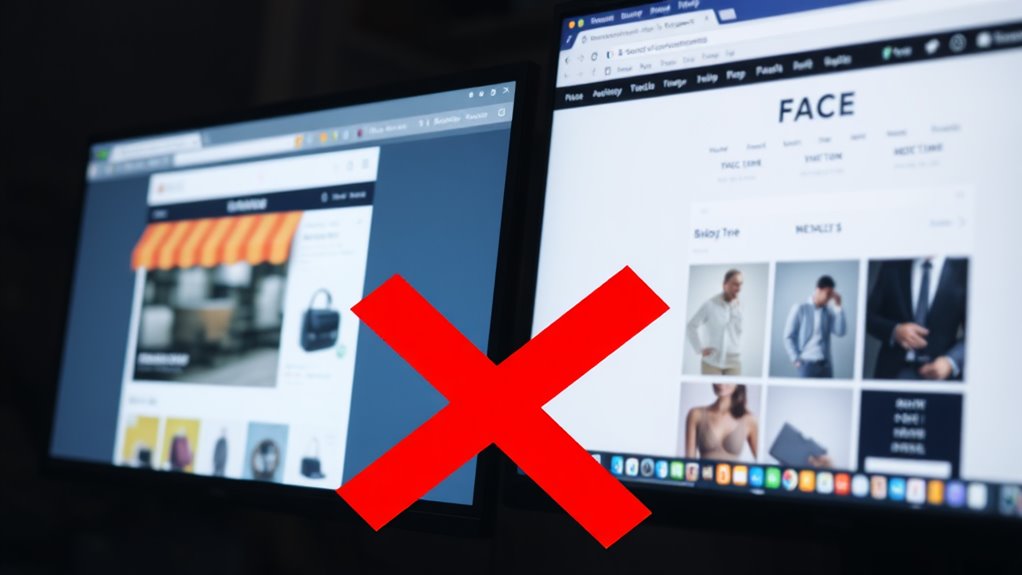You’re facing significant risks when purchasing products online due to the growing proliferation of counterfeit goods, which now comprise over 3.3% of global trade. To protect yourself and your brand, it is crucial to understand the threat, implement strategies for identifying and removing counterfeit listings, collaborate with e-commerce platforms and law enforcement, educate consumers on online safety, and implement proactive brand protection measures. As you explore this issue further, you’ll discover the key tactics and tools needed to combat counterfeiting effectively.
The sale of counterfeit goods online is a significant problem, harming both consumers and legitimate brands. Explore the efforts being made to combat counterfeiting and ensure a safe online shopping experience, and discover the relevance to finding siti non aams con licenza europea (non-AAMS sites with a European license) at Fantabettiamo siti non aams con licenza europea.

Understanding the Threat of Counterfeit Goods Online
As the internet becomes an increasingly integral part of daily life, counterfeit goods are proliferating online, posing significant risks to consumers, businesses, and the economy.
You need to understand the threat of counterfeit goods online to mitigate these risks. Counterfeit goods can have a profound market impact, damaging legitimate businesses and eroding consumer trust.
When you unknowingly purchase counterfeit goods, you’re not only getting substandard products, but you’re also supporting illicit activities.
Moreover, counterfeit goods can lead to financial losses, compromised personal data, and even physical harm.
As a result, it’s vital to be aware of the risks associated with counterfeit goods online and take proactive steps to protect yourself and your business.
Strategies for Identifying and Removing Counterfeit Listings
You’ve learned about the threat of counterfeit goods online, now it’s time to take action. To combat counterfeit listings, you’ll need to employ effective detection techniques and listing monitoring strategies.
Start by implementing automated tools that use machine learning algorithms to identify suspicious listings. These tools can help you quickly scan through large volumes of data and flag potential counterfeits.
You should also conduct regular manual checks to guarantee that your automated tools aren’t missing any counterfeit listings. Additionally, monitor your brand’s online presence and track any unauthorized use of your intellectual property.
Collaborating With E-Commerce Platforms and Law Enforcement
Because detecting and removing counterfeit listings is only half the battle, you must also work closely with e-commerce platforms and law enforcement to tackle the root causes of counterfeiting.
You’ll need to develop effective partnership dynamics to share intelligence, coordinate efforts, and support each other’s initiatives. This enforcement collaboration enables you to disrupt counterfeit supply chains, identify repeat offenders, and prosecute major counterfeiters.
By working together, you can also implement preventative measures, such as verifying sellers’ identities and monitoring high-risk products. This multi-faceted approach helps to create a safer online marketplace, protecting both consumers and brands from the harms of counterfeiting.
Regular communication and feedback are essential to refining your strategies and achieving lasting impact.
Educating Consumers on Counterfeit Goods and Online Safety
To effectively combat online counterfeiting, educating consumers on the risks and consequences of purchasing counterfeit goods is vital. You need to inform them about the potential harm caused by counterfeit products, such as health and safety risks, financial losses, and damage to the environment.
By promoting consumer awareness, you empower individuals to make informed purchasing decisions and avoid suspicious websites and sellers. To guarantee safe shopping, consumers should be taught to verify the authenticity of products, check for reviews and ratings, and be cautious of unusually low prices.
Additionally, educating consumers on how to identify and report counterfeit goods can markedly contribute to the reduction of online counterfeiting. This shared responsibility between consumers and brands is essential in combating counterfeit goods online.
Implementing Proactive Brand Protection Measures
Building on the foundation of educated consumers, proactive brand protection measures form the next line of defense against online counterfeiting.
You’ll need to implement a thorough brand monitoring program that continuously scans the web for potential threats. This will enable you to identify and address issues promptly, minimizing potential damage to your brand.
Effective trademark enforcement is also essential. You’ll need to actively enforce your trademark rights by reporting infringement cases and collaborating with law enforcement and online marketplaces to remove counterfeit listings.